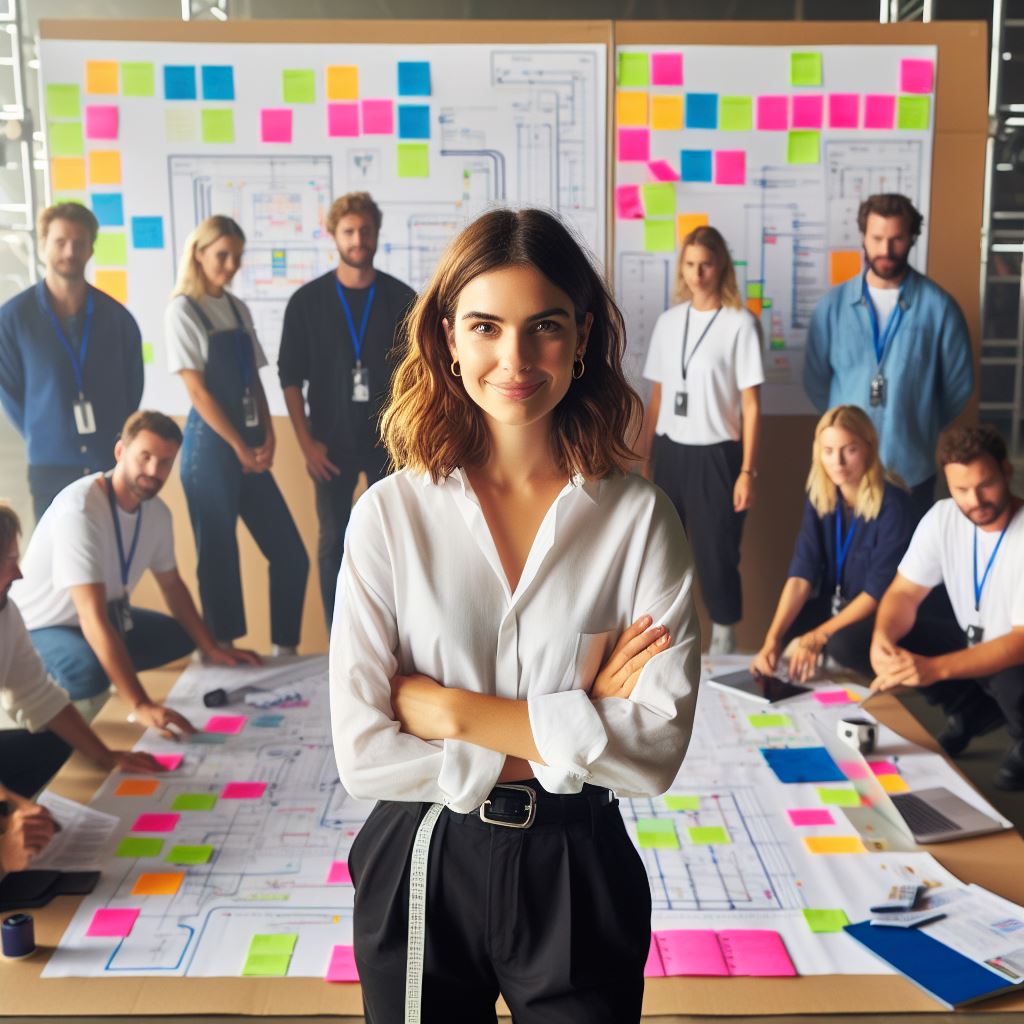Introduction
Creating inclusive events in Australia today is paramount for fostering diversity and promoting equality within the community.
Inclusivity goes beyond a mere buzzword; it reflects a commitment to embracing differences and ensuring that everyone, regardless of their background or identity, feels welcome and valued at events.
This blog post aims to delve deeply into the significance of inclusivity in the context of events, offering a comprehensive exploration of its multifaceted benefits and practical strategies for successful implementation.
As the societal landscape evolves, the demand for inclusive practices has become more pronounced, emphasizing the need for event organizers to adapt and prioritize inclusivity in their planning and execution.
By embracing inclusivity in event planning, organizers can create a more enriching and engaging experience for all attendees.
The strategies discussed in this post will provide valuable insights into fostering an environment where diversity is not only acknowledged but celebrated.
From thoughtful planning to creating accessible spaces, each strategy contributes to an event that is not only memorable but also respectful of the diverse identities and backgrounds that make up the Australian community.
In essence, this blog post serves as a guide for event organizers, encouraging them to view inclusivity not just as a requirement but as an opportunity to create positive, lasting impacts.
By adopting these strategies, events can become platforms for unity, understanding, and shared experiences, reflecting the true spirit of a diverse and inclusive Australia.
Understanding Inclusivity in Events
A. Define Inclusivity in Event Context
In events, inclusivity means welcoming all, regardless of background, abilities, or beliefs.
It fosters an environment where everyone feels respected and valued.
Inclusivity ensures accessibility, representation, and participation for all attendees.
B. Importance of Inclusivity in Australian Events
In Australia, inclusivity is crucial for fostering unity in diversity.
It reflects the country’s multicultural fabric and promotes social cohesion.
Exclusionary practices can alienate certain groups, hindering community integration.
C. Benefits of Hosting Inclusive Events
- Enhanced Diversity: Inclusive events attract diverse attendees, enriching experiences and perspectives.
- Increased Engagement: When everyone feels included, participation and interaction levels soar.
- Positive Reputation: Hosting inclusive events showcases organizational commitment to diversity and equity.
- Expanded Reach: Inclusivity attracts a broader audience, extending event impact and influence.
- Innovation and Creativity: Diverse perspectives spur innovation and creative problem-solving.
- Improved Learning Opportunities: Exposing attendees to varied viewpoints enhances learning and understanding.
- Promotion of Equity: Inclusive events provide equitable opportunities for all participants to thrive.
- Fostering Empathy: Experiencing inclusivity firsthand fosters empathy and understanding among attendees.
- Support for Marginalized Groups: Inclusive events offer platforms for marginalized communities to be heard.
- Legal and Ethical Compliance: Inclusivity aligns with legal requirements and ethical standards, mitigating risks.
To summarize, understanding inclusivity in events is paramount.
By defining it, acknowledging its importance, and recognizing its benefits, event organizers can create truly inclusive experiences for all in Australia.
Read: Travel Agents: Trends in Australia for 2024
Identifying Barriers to Inclusivity
In order to create truly inclusive events, it is essential to first identify and understand the barriers that prevent inclusivity.
By doing so, event organizers can actively work towards breaking down these barriers and ensure that everyone feels welcome and valued.
This section will discuss common barriers that prevent inclusivity in events, explore cultural, linguistic, and socio-economic barriers, and address accessibility issues in events.
A. Common barriers that prevent inclusivity in events
- Lack of diversity in event planning committees and decision-making processes.
- Unconscious bias and stereotyping, which leads to exclusivity.
- Limited representation and visibility of marginalized groups in promotional materials and event programming.
- Ignorance and lack of awareness about the needs and perspectives of diverse communities.
- Language barriers that exclude non-English speakers from meaningful participation.
B. Cultural barriers to inclusivity in events
- Inadequate representation and celebration of diverse cultural backgrounds.
- Insensitive cultural references or activities that alienate certain communities.
- Lack of understanding and accommodation of religious practices and dietary requirements.
C. Linguistic barriers to inclusivity in events
- Absence of translation services or interpreters for non-English speaking attendees.
- Complex jargon or technical language that excludes individuals with limited English proficiency.
- Failure to provide multilingual event materials and signage.
D. Socio-economic barriers to inclusivity in events
- High ticket prices that make events inaccessible to individuals with lower income.
- Limited availability of affordable transportation options to the event venue.
- Exclusive networking opportunities that favor privileged individuals.
E. Addressing accessibility issues in events
- Lack of physical accessibility for individuals with disabilities, such as wheelchair ramps or accessible restrooms.
- Insufficient consideration of sensory disabilities, such as providing sign language interpreters or closed captions.
- Failure to provide alternative formats for event materials, such as large print or braille.
To overcome these barriers and create more inclusive events, event organizers can take the following steps:
- Foster diversity and inclusion within event planning committees by actively seeking a range of perspectives.
- Conduct diversity training for all event staff to raise awareness and sensitivity towards diverse communities.
- Ensure that event promotional materials feature a diverse range of individuals and showcase inclusive programming.
- Employ professional translation services or interpreters to facilitate communication for non-English speakers.
- Incorporate cultural celebrations and activities that reflect and respect the diversity of attendees.
- Provide clear information about religious practices and dietary options to accommodate diverse needs.
- Offer discounted tickets or scholarships to ensure events are accessible to individuals from different socio-economic backgrounds.
- Choose accessible venues and ensure adequate facilities and transportation options for individuals with disabilities.
- Prioritize the inclusion of accommodation options for people with sensory disabilities, such as sign language interpreters or closed captions.
- Provide alternative formats for event materials to ensure accessibility for individuals with visual impairments.
By addressing these barriers and actively promoting inclusivity, event organizers can create a more welcoming and enriching experience for all attendees.
In the next section, we will explore strategies for promoting diversity and inclusivity in event programming. Stay tuned!
Read: How to Become a Travel Agent in Australia
Strategies for Creating Inclusive Events
Creating inclusive events in Australia is crucial for fostering diversity and ensuring equal participation.
Your Personalized Career Strategy
Unlock your potential with tailored career consulting. Get clear, actionable steps designed for your success. Start now!
Get StartedHere are some practical tips for event organizers to promote inclusivity:
A. Prioritize accessibility
- Ensure the venue is accessible to individuals with disabilities, providing ramps and designated parking spaces.
- Offer sign language interpretation or captioning services for participants with hearing impairments.
- Provide accessible seating options and consider the needs of attendees with mobility challenges.
B. Embrace diverse representation in planning and decision-making
- Include individuals from different backgrounds and communities in the event organizing team.
- Create a diverse advisory board that represents the target audience to provide valuable insights.
- Consider cultural, gender, and age diversity when making important decisions.
C. Foster a welcoming and inclusive environment
- Create a code of conduct that explicitly prohibits any form of discrimination or harassment.
- Ensure staff and volunteers are trained to handle situations involving discrimination or exclusion.
- Use inclusive language and avoid stereotypes in event materials and communication.
D. Provide accessible content and resources
- Make event information available in multiple formats, such as braille, large print, and electronic versions.
- Offer live captioning or provide transcripts for presentations and panel discussions.
- Create accessible digital platforms and websites, ensuring compatibility with screen readers.
E. Engage with diverse communities and promote representation
- Collaborate with community organizations and networks that represent diverse groups.
- Showcase a variety of speakers and panelists who can provide different perspectives and experiences.
- Highlight success stories and achievements of underrepresented communities to inspire others.
F. Collect feedback and continuously improve
- Regularly collect feedback from participants to understand their experiences and identify areas for improvement.
- Create channels for anonymous feedback to encourage honest input.
- Actively use the feedback received to implement changes and make future events more inclusive.
G. Collaborate with diversity and inclusion experts
- Seek guidance and expertise from professionals who specialize in diversity and inclusion.
- Work with organizations that offer training and resources to enhance inclusivity in events.
- Encourage speakers and facilitators to undergo diversity and inclusion training to raise awareness.
Creating inclusive events requires intentional efforts to ensure everyone feels welcome, respected, and valued.
By implementing these strategies, event organizers can create a positive and inclusive environment that celebrates diversity and promotes equal participation for all.
Read: Travel Agents: The Future in Aussie Tourism

Providing Accommodations and Accessibility
When organizing events, it is crucial to consider diverse needs and disabilities to create inclusive experiences for everyone.
By providing accommodations and ensuring accessibility, event organizers can allow people from different backgrounds to participate fully.
Here are some examples of accommodations for different groups and the impact of accessible event spaces and facilities.
A. Consideration of Diverse Needs and Disabilities
- Approaching event planning with inclusivity in mind fosters equality and promotes diversity.
- Recognizing that people have different needs and disabilities is the first step towards creating an accessible event.
- By understanding these needs, organizers can implement necessary accommodations to ensure everyone’s participation.
- Disabilities may include physical, sensory, cognitive, or invisible conditions that affect individuals’ ability to participate fully.
B. Accommodations for Different Groups
- Providing wheelchair-accessible ramps and pathways allows people with mobility impairments to move freely.
- Including sign language interpreters enables Deaf or hard-of-hearing individuals to understand and participate in discussions.
- Offering large-print materials or braille versions ensures that people with visual impairments can access written information.
- Creating quiet or sensory-friendly areas caters to individuals with sensory sensitivities or autism spectrum disorders.
- Setting up gender-neutral restrooms accommodates individuals who may not identify within traditional gender norms.
C. Impact of Accessible Event Spaces and Facilities
- Accessible event spaces and facilities promote inclusivity and allow individuals to experience events without barriers.
- They encourage people with disabilities to attend, making events more diverse and representative of the population.
- Accessible spaces also benefit individuals without disabilities, such as parents with strollers or older adults with mobility challenges.
- When venues prioritize accessibility, they send a message of inclusivity and equality, contributing to a more inclusive society.
- Moreover, providing accommodations demonstrates a commitment to equal rights and leaves a positive impression on attendees.
Read: Salary Guide: Travel Agents in Australia
Promoting Diversity and Representation
A. The significance of diverse speakers and performers
Promoting diversity and representation is crucial in creating inclusive events in Australia today.
By ensuring diverse speakers and performers are featured, event organizers create an environment that truly reflects the rich multicultural society we live in.
Here are some key reasons why diverse representation is significant:
- Encourages equal opportunities: Having diverse speakers and performers ensures that different voices and perspectives are heard, providing equal opportunities for all individuals to showcase their talents and expertise.
- Celebrates multiculturalism: Australia is known for its multicultural society, and by featuring diverse talent, events can celebrate the different cultures and backgrounds that contribute to our nation’s identity.
- Inspires and motivates attendees: Diverse speakers and performers can inspire and motivate attendees by sharing their unique stories and experiences, showcasing the value of embracing diversity and breaking barriers.
B. Tips for sourcing diverse talent for events
- Research local communities: Identify local communities that represent diverse backgrounds and reach out to them directly.
This approach helps establish authentic connections and ensures a genuine representation of diverse voices. - Collaborate with cultural organizations: Partnering with cultural organizations or community groups can help source diverse talent for events.
These organizations can provide recommendations and insights on performers and speakers from different backgrounds. - Utilize social media platforms: Leverage social media platforms to connect with diverse talent. Create inclusive call-outs, specifying that you are actively seeking individuals from all cultural backgrounds to contribute to your event.
- Attend diverse events and conferences: Attend events and conferences focused on diversity and inclusion to network and discover potential speakers and performers. Engaging in these environments allows you to tap into a pool of talent committed to promoting diversity.
C. The positive impacts of diverse representation in events
- Increased engagement and attendance: When events embrace diversity, attendees from diverse backgrounds are more likely to feel included and motivated to participate actively. This leads to increased engagement and attendance levels.
- Enhanced learning experience: By giving diverse speakers and performers a platform, events offer attendees a unique opportunity to learn from different perspectives, broadening their horizons and understanding of various cultures.
- Stronger connections with communities: Including diverse representation in events helps build stronger connections with different communities.
It shows respect and appreciation for various cultures, fostering relationships based on inclusivity and trust. - Avoids tokenism: By actively seeking and featuring diverse talent, events avoid the pitfall of tokenism and genuine representation.
Tokenism can be perceived as insincere and may undermine the event’s purpose of promoting diversity.
Therefore, creating inclusive events in Australia requires promoting diversity and representation.
By featuring diverse speakers and performers, event organizers can reflect our multicultural society while also reaping the benefits of increased engagement, learning experiences, and stronger community connections.
By following the tips provided, event organizers can ensure they source diverse talent effectively, contributing to a truly inclusive and memorable event experience.
Uncover the Details: Festivals Down Under: Planning Large-Scale Events
Learn More: Event Marketing Strategies for Australian Markets
Measuring the Success of Inclusive Events
In order to ensure the inclusiveness of events, it is crucial to implement effective methods of evaluation.
These methods enable event organizers to assess whether their efforts to create inclusive spaces have been successful or require further improvements.
By measuring the success of inclusive events, organizers can obtain valuable feedback and make necessary adjustments for future events.
A. Methods to evaluate the inclusiveness of events
- Feedback mechanisms: Implementing various feedback mechanisms can help gather insights from attendees.
- Surveys: Creating surveys that focus on inclusivity can provide detailed opinions and suggestions from participants.
- Attendance data: Analyzing the demographics of event attendees can provide insights into the inclusiveness of the event.
- Observation and participation: Actively monitoring the event and engaging with attendees can provide real-time feedback on inclusivity.
- Documented testimonials: Collecting testimonials from participants can serve as evidence of the event’s inclusiveness.
These methods, when used collectively, contribute to a more comprehensive assessment of an event’s inclusiveness.
By utilizing a combination of feedback mechanisms, surveys, attendance data, observation, participation, and documented testimonials, event organizers can gain a holistic perspective on the success of their inclusive initiatives.
B. Importance of continuous improvement for future events
It is not enough to measure inclusiveness once; continuous improvement is vital for future events.
By making ongoing efforts to enhance inclusivity, event organizers can build upon past successes and address any shortcomings.
Continuous improvement involves:
- Learning from feedback: Actively listening to feedback and utilizing it to identify areas for improvement.
- Designing targeted interventions: Implementing specific actions based on feedback and evaluation results.
- Creating inclusive event policies: Establishing clear policies that prioritize inclusivity in all aspects of event planning and execution.
- Collaborating with diverse stakeholders: Engaging and consulting with diverse groups to ensure their voices and needs are considered in event planning.
- Promoting accessibility: Providing accessible facilities, services, and materials to accommodate individuals with diverse needs.
- Evaluating progress: Regularly assessing and reviewing the impact of implemented interventions to measure progress towards increased inclusivity.
By continuously improving inclusivity, event organizers demonstrate their commitment to creating welcoming environments for all participants.
This dedication helps foster diversity, promote equality, and enhance the overall attendee experience.
Measuring the success of inclusive events is crucial to ensuring continual improvement and creating inclusive spaces in Australia.
By using methods such as feedback mechanisms, surveys, attendance data analysis, observation, participation, and documented testimonials, event organizers can gain valuable insights for future event planning.
Moreover, continuous improvement through learning from feedback, designing targeted interventions, establishing inclusive policies, collaborating with diverse stakeholders, promoting accessibility, and evaluating progress is essential to maintain and enhance inclusivity.
By prioritizing inclusivity, event organizers can create spaces where everyone feels valued and included.
Stand Out with a Resume That Gets Results
Your career is worth more than a generic template. Let us craft a resume and cover letter that showcase your unique strengths and help you secure that dream job.
Get HiredUncover the Details: Path to Becoming a Chef in Melbourne 2024
Conclusion
Creating inclusive events in Australia today is essential for fostering diversity and creating a sense of belonging.
By embracing inclusivity, event organizers can ensure that every attendee feels valued and represented.
Throughout this blog post, we discussed the importance of diverse representation, accessible venues, and inclusive language.
Moreover, we highlighted the significance of engaging with diverse communities and providing equal opportunities for participation.
It is crucial to understand the unique needs of different groups and ensure that events are accessible to everyone.
Inclusivity not only enhances the overall event experience but also contributes to a more equitable society.
As event organizers, we have a responsibility to create spaces that are inclusive, welcoming, and free from discrimination.
Let’s challenge ourselves to actively seek diverse perspectives and integrate inclusivity into every aspect of event planning.
Together, we can create a future where every individual feels empowered and represented in the events they attend.
Take action today and make inclusivity a priority in your next event.
Let’s build a more inclusive Australia, one event at a time.




